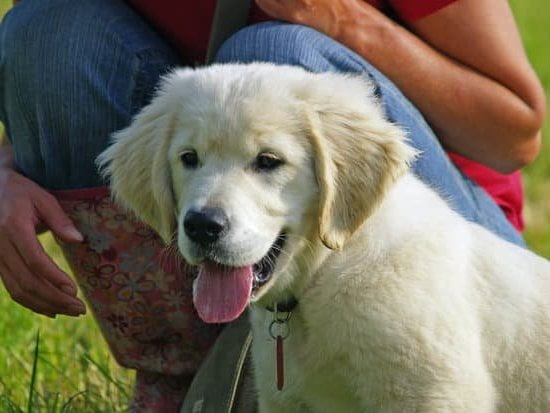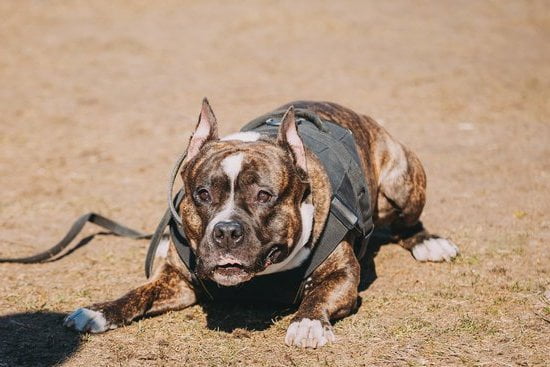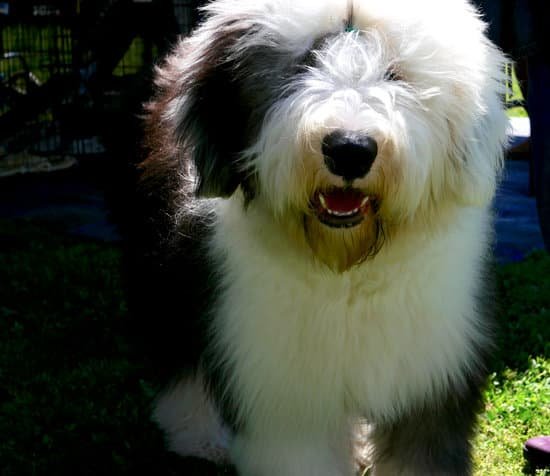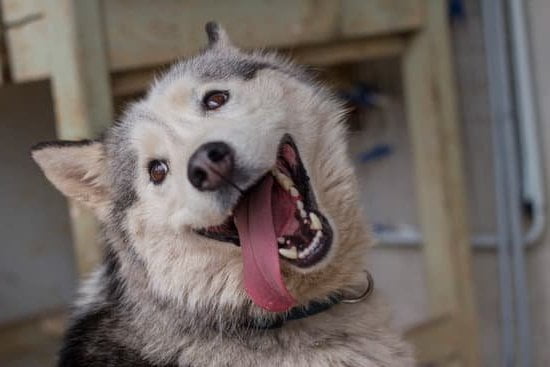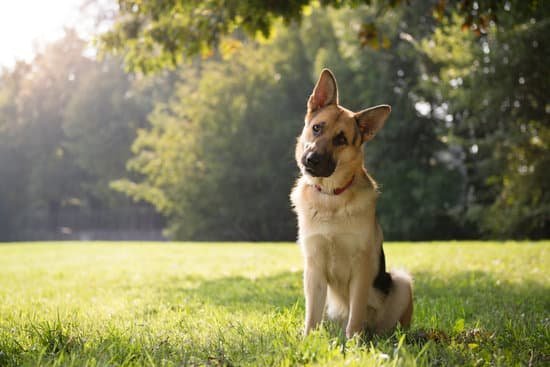The husky breed is known for its intelligence, energy, and independent nature. In this article, we will explore how to train a husky dog effectively in order to channel these qualities into positive behaviors. Understanding the unique characteristics of the husky breed is crucial for successful training and behavioral management.
Huskies are pack animals with a strong instinct for leadership and independence. The key to training a husky lies in establishing yourself as the leader while also building trust and a strong bond with your dog. This requires patience, consistency, and understanding of their natural tendencies.
In addition to understanding the husky’s breed traits, it’s important to recognize the significance of proper training for huskies. Training not only ensures that they are well-behaved and obedient but also provides mental stimulation and strengthens the bond between you and your dog. This section will delve into the various aspects of training that are essential for huskies, from basic commands to advanced techniques tailored specifically for this breed.
The Importance of Training for Huskies
Huskies are incredibly intelligent and independent dogs, which makes training them a crucial aspect of their care and well-being. Without proper training, huskies can exhibit stubborn and challenging behaviors that may prove difficult for their owners to manage. This section will discuss the significance of training for huskies and provide valuable insights on how to effectively train this unique breed.
Training is essential for huskies due to their strong-willed nature and natural instincts. These dogs were originally bred as working sled dogs, which means they have a high energy level and a strong desire to roam and explore. Without adequate training, huskies may engage in destructive behaviors such as chewing, digging, or attempting to escape. Training not only helps address these unwanted behaviors but also fosters a strong bond between the owner and the dog.
One of the key aspects of how to train a husky dog is establishing leadership and trust. Huskies respond best to confident and consistent leadership, so it’s important for owners to establish themselves as the alpha of the pack. By setting clear boundaries and rules, while also showing affection and respect, owners can earn the trust and respect of their husky, making training much more effective.
| Aspect | Importance |
|---|---|
| Behavior Management | Prevents destructive behaviors such as chewing and digging |
| Bonding | Fosters a stronger bond between owner and dog |
| Mental Stimulation | Keeps huskies mentally engaged and prevents boredom-related issues |
Establishing Leadership and Establishing Trust
When learning how to train a husky dog, it’s crucial to understand the importance of establishing leadership and trust with this independent and strong-willed breed. Huskies are known for their pack mentality, so they naturally look for a leader to follow. Without proper leadership, a husky may exhibit behavior problems and disobedience.
To establish yourself as the leader in your husky’s eyes, it’s important to set clear boundaries and rules from the start. Consistency is key when training a husky, so make sure everyone in the household is on the same page when it comes to expectations and commands. Use positive reinforcement techniques to reward good behavior and redirect any unwanted behavior.
Here are some effective strategies for establishing leadership and trust with your husky:
- Set clear rules and boundaries
- Be consistent in enforcing rules
- Use positive reinforcement techniques
- Provide mental stimulation through activities like puzzle toys and training exercises
Basic Commands and Obedience Training
Teaching Basic Commands
When it comes to training a husky dog, teaching them basic commands is essential. Start with simple commands such as “sit,” “stay,” “come,” and “down.” Use positive reinforcement techniques such as treats, praise, and petting to encourage your husky to follow these commands. Be patient and consistent in your training, as huskies can be independent-minded and may take some time to learn these commands.
Leash Training
Huskies are known for their strong prey drive and love for running, so leash training is crucial for their safety. Use a sturdy leash and collar to begin leash training with your husky. Start in a quiet, distraction-free environment and gradually introduce more stimulating environments as your husky becomes more comfortable walking on a leash. Teach them to walk beside you without pulling and to respond to your cues when walking.
Crate Training
Crate training can be useful for providing your husky with a safe space and helping with house-training. Introduce the crate as a positive environment, using treats and toys to encourage your husky to enter the crate willingly. Gradually increase the amount of time they spend in the crate, always making sure they have access to water and regular bathroom breaks. Consistent crate training can help prevent destructive behavior when you’re away from home.
Training a husky requires patience, consistency, and positive reinforcement. By teaching basic commands, leash training, and crate training, you can set a solid foundation for obedience training with your husky dog.
Positive Reinforcement Techniques
Positive reinforcement is a crucial aspect of training husky dogs. These intelligent and independent-minded dogs respond well to positive reinforcement techniques, such as praise, treats, and affection. When training a husky, it’s important to focus on rewarding desirable behavior rather than punishing undesirable behavior.
Using treats as rewards can be highly effective when training a husky dog. It’s essential to use high-value treats that are particularly appealing to your husky, such as small pieces of cooked meat or cheese. When your husky successfully follows a command or exhibits good behavior, immediately reward them with a treat and plenty of verbal praise. This reinforces the desired behavior and creates a positive association with obeying commands.
In addition to treats, verbal praise and affection are also powerful tools for reinforcing positive behavior in huskies. These social animals thrive on attention and approval from their owners, so using verbal cues such as “good boy” or “good girl” can have a significant impact on their willingness to follow commands. By consistently using positive reinforcement techniques, you can effectively train your husky to exhibit desired behaviors and respond obediently to commands.
Socialization and Behavior Management
Socializing a Husky is an essential aspect of their training. Huskies are known for their independent and strong-willed nature, so proper socialization is crucial to prevent any behavioral issues as they grow older. Here are some tips on how to properly socialize and manage the behavior of your Husky:
- Start early: Introduce your Husky puppy to a wide variety of people, places, and other animals as early as possible. This will help them become more adaptable and less likely to develop fear or aggression towards new experiences.
- Positive experiences: Ensure that all socialization experiences are positive for your Husky. Use treats, praise, and playtime to create positive associations with new encounters.
- Exposure to different environments: Take your Husky to different environments such as parks, pet stores, or busy streets to expose them to various sights and sounds. This will help them become more confident in different settings.
Behavior management is also crucial when it comes to training a Husky. Their high energy levels and intelligence can sometimes lead to destructive behavior if not properly managed. Here are some tips on managing the behavior of your Husky:
- Consistent rules: Set clear and consistent rules for your Husky from an early age. Consistency is key in ensuring they understand what behavior is acceptable.
- Regular exercise: Provide regular physical exercise for your Husky to prevent boredom and excessive energy, which could lead to destructive behavior.
- Mental stimulation: Keep your Husky mentally stimulated with toys, puzzles, or training activities to prevent boredom and destructive tendencies.
By following these tips for socialization and behavior management, you can ensure that your Husky grows up to be a well-adjusted and well-behaved companion.
Exercise and Mental Stimulation for Huskies
Huskies are an incredibly energetic and intelligent breed that requires a lot of exercise and mental stimulation to keep them happy and healthy. In this section, we will explore the specific needs of huskies when it comes to exercise and mental enrichment, as well as some tips on how to ensure they get the physical and mental challenges they need.
Exercise Needs
Huskies are known for their boundless energy, and they require a lot of exercise to keep them from becoming bored and destructive. A tired husky is a well-behaved husky, so it’s important to make sure your dog gets plenty of physical activity every day. This can include activities such as running, hiking, or playing fetch in a secure area. Additionally, huskies can also excel in canine sports such as agility or sledding.
Mental Stimulation
In addition to physical exercise, huskies also need plenty of mental stimulation to stay happy and engaged. Without proper mental enrichment, huskies can become bored and may resort to destructive behaviors such as digging or excessive barking. To prevent this, consider providing your husky with puzzle toys, interactive games, or training exercises that challenge their intelligence. Engaging in obedience training or teaching new tricks can also provide the mental stimulation that huskies need.
Now that you understand the exercise and mental stimulation needs of huskies, it’s important to incorporate these activities into your daily routine to ensure your husky remains healthy and well-adjusted. By providing both physical exercise and mental challenges, you can help fulfill your husky’s natural instincts while preventing behavior issues that can arise from boredom or lack of stimulation.
Dealing With Husky-Specific Challenges and Behaviors
Huskies are a unique breed with specific challenges and behaviors that require special attention during training. One of the key aspects of training a husky is understanding their independent nature and high energy levels. It’s important to provide them with the right guidance and structure to help them thrive in a domestic environment.
One of the most common challenges husky owners face is their tendency to escape or wander off. This behavior stems from their strong prey drive and desire to explore. To address this issue, it’s important to provide them with plenty of physical and mental stimulation through exercise and interactive toys. Additionally, proper fencing and supervision are essential for keeping huskies safe and secure in their environment.
Another unique behavior of huskies is their howling, which is a natural form of communication for them. While it may be instinctual, excessive howling can be disruptive in a household. Training techniques such as positive reinforcement can be used to redirect this behavior and teach them alternative forms of communication.
Lastly, huskies have a strong pack mentality which can lead to potential dominance issues if not addressed properly. Establishing yourself as the leader through consistent training methods is crucial for maintaining a harmonious relationship with your husky. It’s essential to understand their natural inclinations as sled dogs and work towards channeling their energy into productive activities.
Understanding these specific challenges and behaviors is vital in successfully training a husky dog. By implementing the right techniques and being patient, you can effectively address these unique traits while building a strong bond with your canine companion. Learning how to train a husky dog takes time, dedication, and understanding of their distinctive characteristics.
Advanced Training for Huskies
Once your husky has mastered the basic obedience commands, you may want to consider advanced training to further challenge and stimulate their intelligent minds. Advanced training can help deepen the bond between you and your husky, as well as keep them mentally sharp and engaged.
One important aspect of advanced training for huskies is agility training. This type of training involves navigating obstacle courses, jumping over hurdles, weaving through poles, and more. Agility training not only provides physical exercise but also mental stimulation for your husky. It requires them to think critically and make split-second decisions, which can be a great way to channel their energy in a positive direction.
Another component of advanced training for huskies is specialized activities such as sledding or skijoring. These activities are deeply rooted in the husky’s breeding history and can be an excellent way to tap into their natural instincts while providing a fun and challenging outlet for their boundless energy.
Lastly, consider enrolling your husky in advanced obedience classes or even specialized activities like scent work, search and rescue training, or even therapy dog certification. These types of advanced training not only provide mental stimulation but also give your husky a sense of purpose and fulfillment.
By incorporating these advanced training techniques into your husky’s routine, you can ensure that they remain happy, healthy, and well-behaved companions. Always remember to be patient with your husky during advanced training as it may take time for them to master new skills. And always use positive reinforcement techniques to encourage good behavior and progress in their training journey.
Troubleshooting Common Training Issues With Huskies
In conclusion, training a Husky dog can be a challenging but rewarding experience. Understanding the unique traits and temperament of the Husky breed is crucial in effectively training them. By establishing leadership and trust, using positive reinforcement techniques, and providing ample exercise and mental stimulation, owners can set their Huskies up for success.
Socialization and behavior management are also key components in training a Husky. Exposing them to different environments, people, and animals from a young age can help prevent common behavioral issues. Additionally, addressing specific challenges such as stubbornness, independence, and high energy levels is essential in the training process.
For those looking to take their Husky’s training to the next level, advanced training techniques can further enhance their obedience and responsiveness. It’s important for owners to remain patient, consistent, and understanding throughout the training journey. By following these guidelines on how to train a Husky dog, you can develop a strong bond with your pet while ensuring they are well-behaved companions.
Frequently Asked Questions
Are Huskies Easy to Train?
Huskies are intelligent and independent dogs, but they can also be quite stubborn. This makes them a bit challenging to train compared to other breeds. Consistency, patience, and positive reinforcement are key when training a Husky.
How Do You Discipline a Husky?
Discipline with a Husky should focus on positive reinforcement rather than punishment. Using rewards, such as treats or praise, for good behavior is more effective than harsh discipline. Huskies respond well to firm and consistent training.
How Do You Train a Bad Husky?
Training a “bad” Husky involves understanding the root of their behavior issues. Identifying the cause, whether it’s boredom, lack of exercise, or anxiety, is crucial in addressing and modifying their behavior. Professional training and consistency are essential in training a difficult Husky.

Welcome to the blog! I am a professional dog trainer and have been working with dogs for many years. In this blog, I will be discussing various topics related to dog training, including tips, tricks, and advice. I hope you find this information helpful and informative. Thanks for reading!

